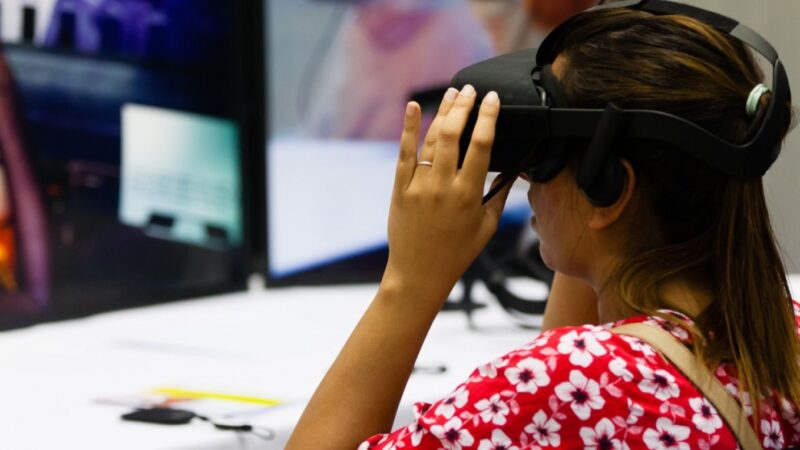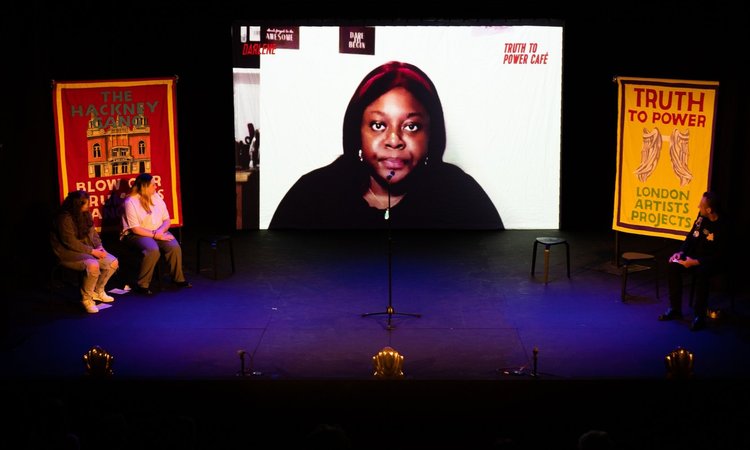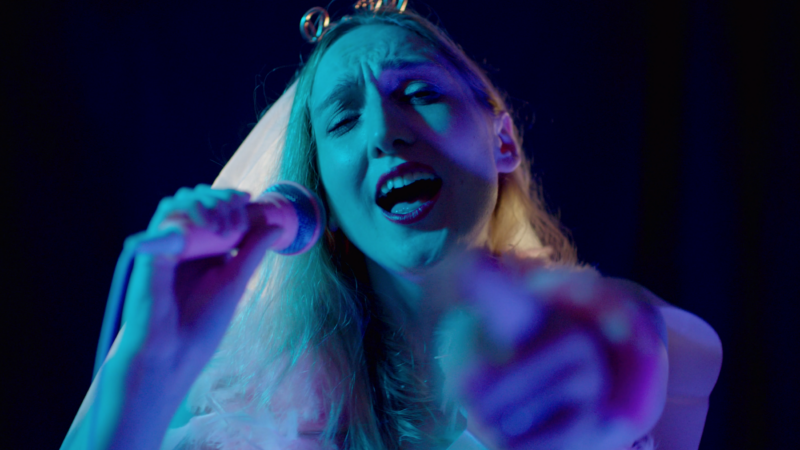How do you take a hit theatrical show and live stream for the first time? This case study explains how international touring theatre company Complicite worked with The Space to take its show The Encounter to a new audience. Find out how an already complex production was right for online streaming and learn the lessons the company has already taken on into a series of further live streams.
What’s it about?
The Encounter is a show by Complicite’s Artistic Director, Simon McBurney, who wrote the piece and performs it solo to sell-out theatre audiences around the world. It’s a one-man retelling of another one man’s story: Complicite has adapted a photographer’s real life journey into the Amazon rainforest. As the photographer gets lost and encounters people in situations that stretched his consciousness, McBurney immerses us in the tale through remarkable use of technology.
It’s a high-tech production where the technology is so finely used that it fades into the background and you become unaware of it as you instead become entirely engrossed in the story.
The Encounter is based on the book Amazon Beaming by Petru Popescu and Complicite worked on bringing it to the stage for more than a decade. After it debuted in Edinburgh in 2015, Complicite wanted to use it for their very first live steaming production and came to The Space for advice.
Poppy Keeling, Complicite’s Associate Producer – Creative Learning at the time, says: “We thought The Encounter would be a good contender for live streaming because of the almost one-on-one nature of the performance. Even though you’re watching the theatre show in a big auditorium, you are directly connected to the single performer. I think the fact that the show was quite technological as well, that meant we were already thinking about ways to get more interesting with it digitally.”
The show tells its story through binaural sound: rather than a traditional stereo recording, Simon McBurney performs to and around a binaural dummy head microphone set on stage. This audio feed is then transmitted to the theatre audience via their individual headphones. Rather than a tale being told in front of them, the story is happening in their ears with a constantly shifting perspective depending on where Simon is standing or moving – it puts the audience members at the centre of the piece; so that the story is happening to you.
McBurney also performs alone but he will talk to people you then hear recordings of. It’s a truly complex, multi-layered production which doesn’t feel complex to the audience; it feels like a complete experience.
Solving technical issues
Even before coming to The Space or looking into live streaming, the very nature of the show meant that a swathe of technical issues had to be solved, such as providing 600 theatre goers with headphones. Then there was the issue of recording binaural sound at all.
“The fact that the show was quite technological as well, that meant we were already thinking about ways to get more interesting with it digitally.” Poppy Keeling, Complicite
“That came along very, very early in the experiments for the show,” says Keeling, “and it came from two places. One is that the sound designer on the show, Gareth Fry, just had a bee in his bonnet about using binaural sound. Then at around the same time, say 2009, Simon McBurney saw a piece by Swedish company Lundahl & Seitl that used binaural sound and he was really struck with that. So it was always part of our thinking.”
Consequently Complicite already had the show and at least a great part of the technology needed before the company even came to The Space. What it didn’t have was any experience of live streaming or the costs involved.
The company approached The Space asking for funding to steam the show live from its performance at the Barbican Centre in London. What it got was a more detailed commissioning process than it was used to – and now says that process helped hugely.
Keeling: “It was the first time we had ever live streamed anything. We were working with a really experienced team but I think if we had not also been working with The Space we might’ve let our team do everything and not quite understood all we were doing ourselves.”
The team that produced the final live stream is the same one that had worked on filming many Complicite shows. Keeling says that without this process it would probably have been a case of Complicite doing the theatre show and this team making the live stream. “So having to mediate between the two parties and really tell The Space what we were doing, we had to know it ourselves.”
This meant that the live stream was a tight bond between the technical team and the creative one. Plus working through the commissioning process closely meant that: “We ended up with more investment than we initially requested, allowing for more cameras, more rehearsal time and more social media support.”
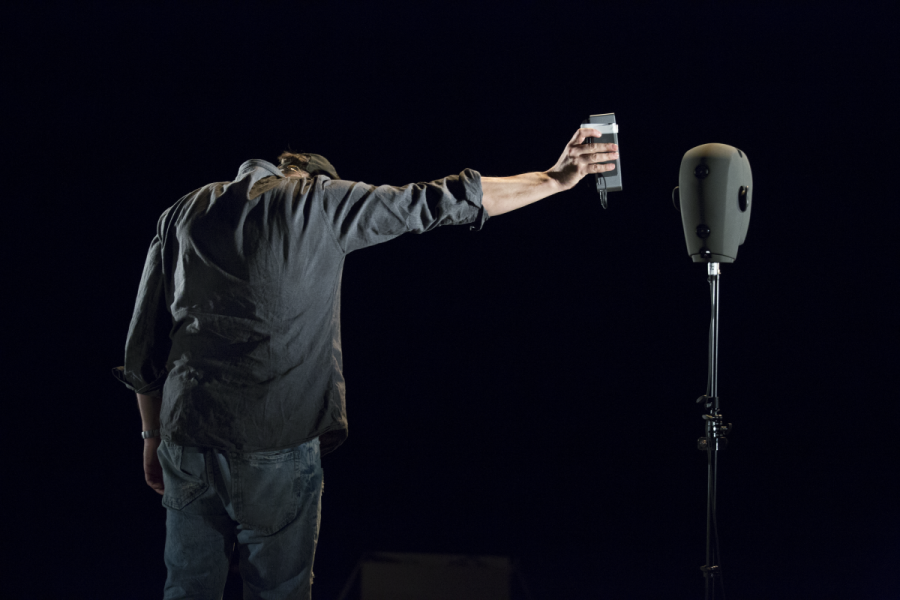
The approach
The Encounter was live streamed on one night and the recording was scheduled to be available online for one week. The live recording team had three weeks working with the production “to plan what they were going to do and to really get to know the show”.
During those three weeks, the production team filmed some parts to see how it looked on screen and then built up to a practice streaming. Keeling: “For a couple of nights we streamed the show to just a private YouTube channel just to check that it was working. Then they also did a full dummy run with in-camera editing and saved it so that was always available if something went wrong. If anything had, we could’ve just played out that recording but luckily we didn’t have to.”
On the night, there were three complete audio systems in the theatre. One was the regular 600 pairs of wired headphones for the audience – wireless proved inadequate for the sound quality needed – plus the crew’s talkback. Then there was the live stream audio on top of that. Add to it the video from multiple cameras and the chance for things to go wrong was significant.
So significant that it would’ve been safer to just put out the pre recorded version but Keeling says that’s not what they wanted. “I think that there are two arguments for live streaming instead of pre record and one is that for us the liveness of it is really exciting, it’s an event we’re creating that we can market. Then the second is that there is something about going ‘right, it’s just going to be made tonight and it’s raw in the same way that theatre experience is raw’, that works for us.”
The marketing was a key part of the whole approach and one tip that Keeling says she’d give to anyone wanting to mount such a production is to spend enough money on the marketing. “It’s something that probably goes wrong in a lot of digital projects because you can make something really brilliant and fantastic but if nobody sees it then it didn’t exist.”
Audience engagement
Complicite was already promoting its existing show and that show was booked to tour the UK and overseas. As the live stream project progressed, that marketing turned to encompass the stream and Complicite filmed a series of short promotional films.
They made short clips with famous Complicite fans such as Benedict Cumberbatch enthusing about the show and films with enthusiastic audience members just stepping out from seeing the production. They made around half a dozen celebrity films and ten audience ones that were then shared over YouTube, Twitter and Facebook.
“Our Facebook and Twitter followers increased by 11 per cent and our YouTube subscribers rose from 80 to nearly 3,000.”
Then specifically for the promotion of the live stream from the Barbican, the company reached out to every theatre it was going to and many more in its network. “Theatres and arts organisations and anyone we could think of,” says Keeling. “We approached over 40 partners and asked them to take an embedded link from our live stream and host it on their sites.”
“We were staggered to find that we had over 13,000 views on the night of the live stream” Poppy Keeling, Complicite
The organisations that said yes ranged from The Guardian and Financial Times news sites to other theatres such as Tobacco Factory Theatres. “At first we thought we were being a bit cheeky asking to help us market the show,” says Keeling, “but then we realised that we were offering them great digital content for free, that they were getting the chance to do something unusual on their website.”
All of the partners who agreed got the show at the same time and each streamed it, each promoted it across social media.
Not everyone agreed, though, and Complicite only worked to get the show available online for a week. “It’s all unknown territory. A surprisingly large number of them said yes, that sounds really cool but some of the venues we’d already been booked to bring the show to said there was no way they’d do it. We understood why, of course, because The Encounter was still on tour and we were still getting bookings for it.”
Keeling thinks this will change as venues and companies get used to online work. “The digital theatre world is in its infancy and lots of these things just aren’t clear. Venues worry that if something is available online then people won’t see it in theatres, though there’s a lot of evidence now that actually watching it online spurs people to go see it.
“Similarly, people that own the rights to music and text and video, these areas aren’t clear either. So you can write them all a letter and say it’s not for profit, it’s only going to be up for one week and that it’s a great experience, it’s brilliant for students and for people who can’t make it to theatres. You can make lots of arguments for why it should be up there for, say, a week or some fixed amount of time. But once you’re planning to put it up forever, then suddenly everyone is concerned about their material and what they’re getting from it.
“So I think that hopefully in the future when everyone knows more about this, it’ll be easier to understand how this world works and whether anyone makes money, or how you might share any money you might be making. At the moment, though, the way to get this done was to commit to it being there for a fixed amount of time.”
Outcomes
As well as the increased social media following, the live stream itself was seen by over 67,000 people in that one week it was available.
Keeling: “We didn’t really have an idea of what success would look like because we hadn’t done anything like this before. Our advisors and other live streaming companies said that we should be pleased to get 5,000 people watching the live event given that our timeframe for marketing was only a couple of weeks.
“They advised that audiences only really clear diaries and sit down for live streams en masse for sporting events. We were staggered to find that we had over 13,000 views on the night of the live stream with [a peak of] around 4,000 concurrent viewers.”
Since the original live stream and on demand week, Complicite made The Encounter available on demand again in May 2017. In total, over the two periods, over 60 partner websites shared the recording, it led to 67.5k YouTube views in March 2016 and 20.8k views in May 2017, with 53% of viewers aged 34 or under.
Future developments
Using what they learned from The Encounter, Complicite now regularly live streams its shows and continues to develop what it tries – and where it tries it. Complicite has now been trying streaming to Facebook Live to see what reaction is like and is seeing similar audience engagement there.
What it’s learned includes the usefulness of having practice runs to sort out any technical issues in advance; which platforms work well for which shows and lessons around managing the projects. Lessons that apply for all organisations wanting to do this.
“The second time we did live streaming, after The Encounter, we certainly had a larger number of us all prepared to respond to comments on YouTube, Facebook and Twitter. We prepared ourselves for having to reply to a lot of people or even to just listen to them.”
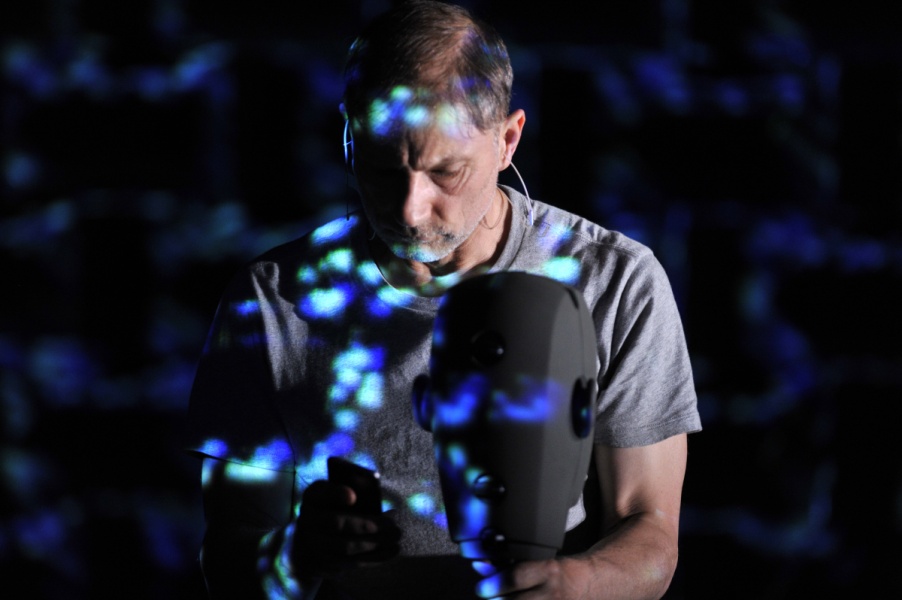
Top Tips around live streaming from Complicite:
- Put the performance first and make sure you choose the right platform and technology for the production.
- Find a production team that’s right for your organisation, will be sympathetic to your production and share your vision. You don’t have to become an expert in broadcast but if you have the right team they’ll ask the right questions to make sure you get what you want. We were so pleased with the Producer and Director we hired- they went above and beyond and of course it’s crucial the live director feels comfortable with the streaming director.
- Set aside lots of resources for marketing- both in terms of energy and finance. There’s no point in capturing and streaming a great show if you don’t create ways to engage a large audience.
- It really helps with awareness raising if your live show is a sell out and attracting great reviews. We had great press around the show – going back to August 2015 when it premiered at the Edinburgh International Festival.
- Don’t worry about live streaming affecting ticket sales of live events. We have no evidence that was the case. Our experience is that the live stream generated a huge audience to engage with so we can help publicise future productions to a captive audience.
More information
The Encounter is based on the book Amazon Beaming by Petru Popescu: http://amzn.to/2oe2Wtf
There’s a resource pack with video interviews on Complicite’s website at http://www.complicite.org/encounterresource/ and videos on the making of the show on their YouTube channel
Complicite also subsequently live streamed another show last year – Beware of Pity in Feb 2017. http://www.complicite.org/productions/BewareOfPity
About Complicite
Complicite is an international touring theatre company, based in London. Founded in 1983 by Annabel Arden, Fiona Gordon, Marcello Magni and Simon McBurney, the Company is now led by Artistic Director McBurney OBE and Producer Judith Dimant MBE.
Complicite is at http://www.complicite.org
How useful was this resource?

